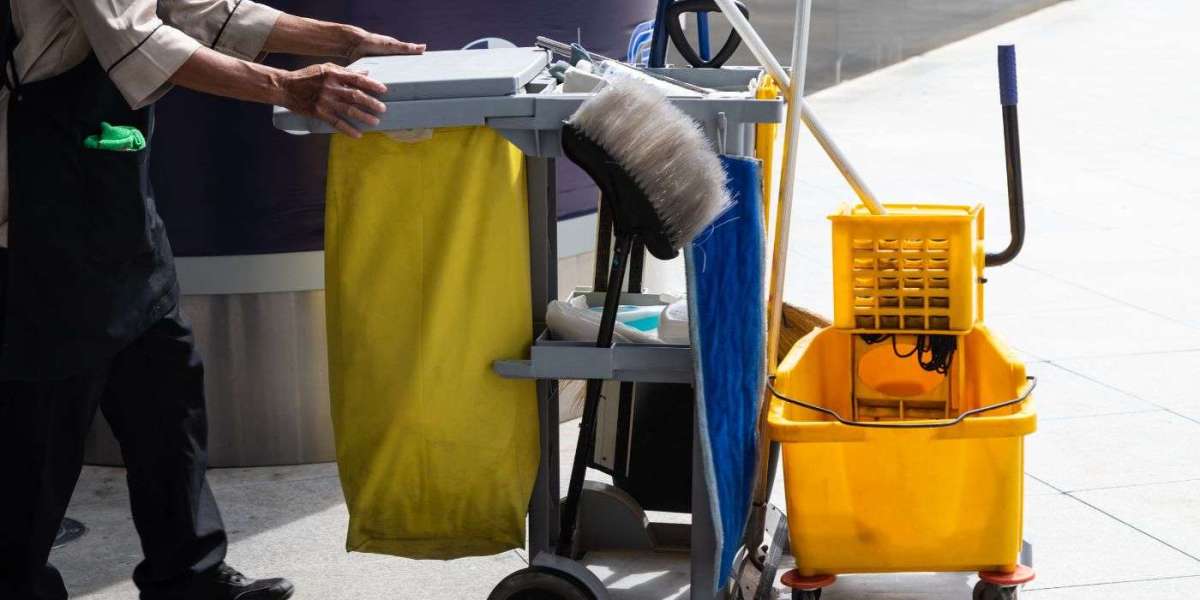Smart buildings have transformed how we think about facility management. They’re no longer just about controlling heating, cooling, or lighting — they’re about creating responsive environments that adapt to how people actually use spaces. One of the most overlooked yet powerful applications of this technology is in janitorial services. When cleaning operations connect directly with a building’s management system (BMS), the result is smarter scheduling, better hygiene, reduced waste, and measurable returns on investment.
This guide explains how integrating janitorial services with BMS technology works, why it matters for modern facilities, and how it can improve everything from daily cleaning schedules to Deep Cleaning strategies.
Why integrate janitorial services with BMS?
Cleaning is traditionally managed with fixed schedules: restrooms get serviced every two hours, lobbies are vacuumed daily, and deep cleans happen quarterly. But this doesn’t always reflect reality. Some areas see more traffic than others, while others go nearly unused between cleanings. Integrating janitorial services with a BMS flips the script by making cleaning responsive and data-driven.
Key benefits include:
Smarter scheduling: Instead of blindly following a checklist, cleaning staff are directed to areas that show real use — such as heavily trafficked restrooms, kitchens, or conference rooms.
Faster response to issues: If a soap dispenser runs low or a trash bin fills up, sensors can automatically alert janitorial teams so problems are solved before complaints arise.
Lower labor and supply costs: With fewer wasted checks and unnecessary cleanings, staff time and cleaning supplies are used more efficiently.
Improved occupant satisfaction: Tenants, employees, and visitors notice when spaces are consistently fresh, stocked, and hygienic. This builds trust and enhances the overall image of the building.
Core components: the building blocks of integration
Sensors and IoT devices
Smart buildings rely on sensors to generate data. For cleaning and maintenance, the most useful include:
Occupancy counters: Track how many people enter or exit a restroom or conference room.
Supply-level sensors: Monitor dispensers for soap, paper towels, or toilet paper.
Bin-fill sensors: Alert staff when trash bins or recycling containers are nearly full.
Air quality monitors: Detect odors, VOCs, or particulate matter, prompting ventilation or Deep Cleaning when needed.
Motion sensors: Map traffic flow so cleaning efforts align with real-world use.
These devices connect to the BMS and provide real-time signals about when and where attention is needed.
Software and data integration
The real power of integration lies in the software. A modern building may have three interconnected systems:
BMS (Building Management System): The core automation system controlling HVAC, lighting, and sometimes security.
CAFM/CMMS (Facility Management Software): Platforms that create and manage work orders, service requests, and compliance tracking.
Janitorial dashboards/apps: Mobile platforms used by cleaning teams to receive tasks, log completed work, and escalate issues.
Through open APIs or middleware platforms, data flows seamlessly between these systems. For example, a “restroom occupancy threshold reached” alert from a sensor in the BMS can automatically trigger a cleaning work order in the CAFM, which then appears as a notification on a janitorial app.
Workflows and performance metrics
To make integration work, buildings must define clear rules and KPIs:
Example workflow: “If restroom occupancy exceeds 300 uses within two hours → trigger a priority cleaning.”
KPIs might include:
Response time to triggered work orders
Completion rates
Tenant satisfaction scores
Cost-per-square-foot cleaned
How to implement integration step by step
Audit your facility. Identify which areas need the most attention — usually high-traffic restrooms, breakrooms, and lobbies. Also, flag Deep Cleaning tasks like carpet shampooing, duct cleaning, and floor refinishing.
Choose a pilot zone. Start with one restroom bank, one floor, or one high-traffic zone to prove ROI before scaling.
Select sensors and partners. Pick IoT devices and a cleaning partner that can integrate with your existing BMS and CAFM software.
Integrate systems. Use middleware if needed to ensure alerts generate actionable work orders.
Train the staff. Janitorial crews need hands-on training with apps, alerts, and escalation rules.
Monitor and adjust. After 60–90 days, evaluate performance data, then adjust thresholds and workflows for optimal efficiency.
Deep Cleaning: smarter, not just scheduled
Deep Cleaning tasks — such as steam-cleaning carpets, stripping and waxing floors, or disinfecting ventilation systems — are critical for health and building longevity. Traditionally, these are done on fixed quarterly or annual schedules. But BMS integration allows facilities to make deep cleaning more strategic.
Seasonal coordination: In places like Reno, NV, seasonal dust in summer or mud and salt during winter can trigger more frequent deep cleans.
Data-driven triggers: Poor air quality or occupancy spikes can automatically generate a Deep Cleaning work order.
Occupant comfort: Scheduling deep cleans during low-occupancy hours reduces disruption and ensures better results.
This combination of proactive scheduling and reactive triggers ensures deep cleaning is done when it’s most needed, not just when it’s on the calendar.
Case study: Smart restroom integration
A major Class A office building deployed Kimberly-Clark Professional’s Onvation® smart restroom solution to integrate with its facilities platform. By monitoring restroom traffic and dispenser levels, the system generated automatic work orders for janitorial staff. The results were dramatic: the building reduced redundant checks, cut labor costs by tens of thousands of dollars annually, and improved tenant satisfaction scores.
This example highlights how a seemingly small integration — restrooms — can yield a huge return, especially when scaled across multiple floors or properties.
Local context: Janitorial services in Reno
For businesses searching for janitorial services Reno, integration with BMS technology can be a game-changer. Reno’s unique climate — dusty summers, snowy winters, and seasonal pollen — creates fluctuating cleaning demands. A vendor that understands these seasonal challenges and can provide both routine and Deep Cleaning services tied to smart building data offers clear advantages.
Local companies that invest in IoT-enabled workflows stand out as reliable, forward-thinking partners who provide more than just manpower — they provide results-driven, measurable cleaning strategies.
ROI and savings
The value of integrating janitorial services with a BMS is both financial and experiential:
Labor savings: Reducing wasted checks and redirecting staff to real needs.
Supply optimization: Restocking based on usage, not arbitrary schedules.
Lower emergency costs: Fewer reactive deep cleans and occupant complaints.
Better tenant retention: A clean, comfortable environment contributes directly to satisfaction and lease renewals.
Even modest pilot programs often deliver savings that justify expansion across the entire building portfolio.
Choosing the right janitorial partner
When selecting a cleaning service, especially if you’re focused on Reno or similar markets, ask these key questions:
Do you have experience working with smart building systems or CAFM software?
Can your team support both daily cleaning and Deep Cleaning triggered by data?
How do you train your staff on mobile apps and digital alerts?
What KPIs and SLAs will you commit to in your service contract?
Can you provide references from local businesses?
The right partner will combine affordability, reliability, and proven expertise with technology-driven cleaning methods.
Overcoming common barriers
Legacy building systems: Older BMS platforms can still connect through wireless sensors and middleware software.
Data privacy: Occupancy and usage data should always be anonymized to protect privacy.
Staff resistance: Training and supervisor engagement are key to adoption.
Cost concerns: Pilot programs prove ROI quickly, easing budget approval for full deployment.
Quick-start checklist
Identify pilot areas and Deep Cleaning priorities
Select IoT sensors compatible with your BMS
Define triggers for automated work orders
Train janitorial staff in mobile workflows
Review data at 30/60/90 days and adjust thresholds
Communicate benefits to occupants and stakeholders
FAQs
Q: Does smart cleaning reduce staff numbers?
A: No — it makes staff more efficient. Crews spend less time on unnecessary checks and more time addressing real needs.
Q: How often should Deep Cleaning be done?
A: Frequency should be based on occupancy data and air quality. High-traffic zones may need monthly deep cleans, while low-use spaces can remain quarterly or semi-annual.
Q: Can this work in older buildings?
A: Yes. Wireless sensors and cloud-based platforms make integration possible without major retrofits.
Q: Is the data secure?
A: Yes, with proper encryption and access controls. Modern platforms anonymize data to avoid privacy concerns.
Final thoughts
Smart building technology is changing facility management, and cleaning is one of the areas seeing the most benefit. By linking janitorial services with BMS platforms, facility managers can reduce costs, improve cleanliness, and boost tenant satisfaction — all while maintaining flexibility for seasonal demands and Deep Cleaning.
For companies in markets like Reno, where climate and occupancy patterns vary throughout the year, finding a janitorial partner who understands both local conditions and modern building systems is critical. Whether you’re searching for routine maintenance or specialized janitorial services Reno, choosing a tech-enabled partner can transform cleaning into a results-driven, measurable part of your smart building strategy.





